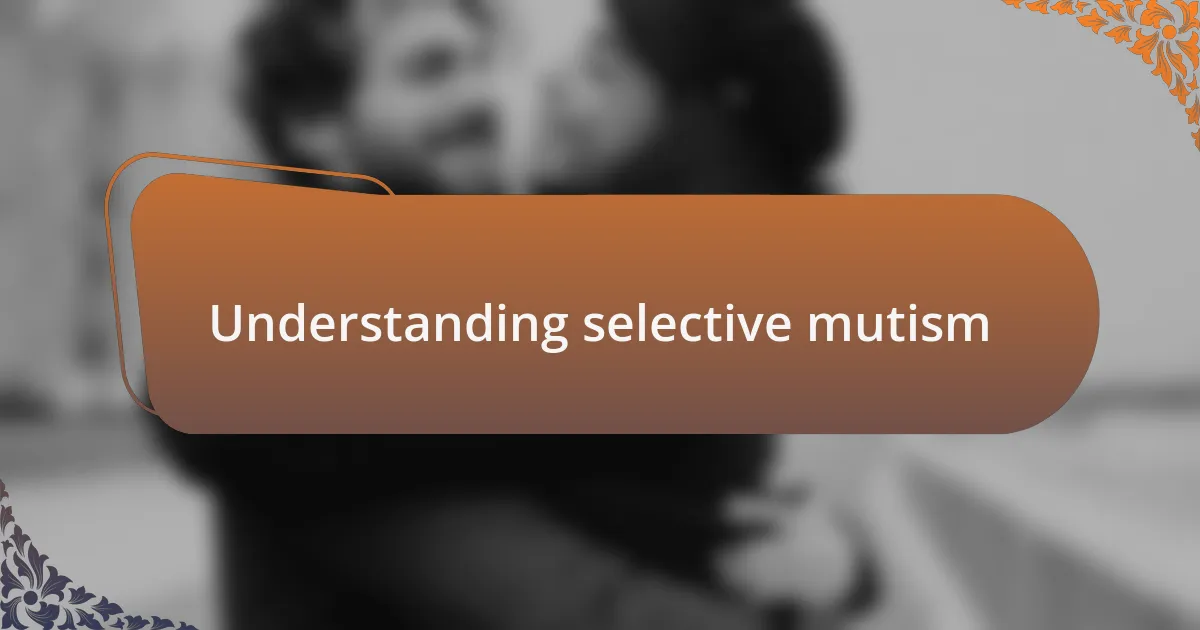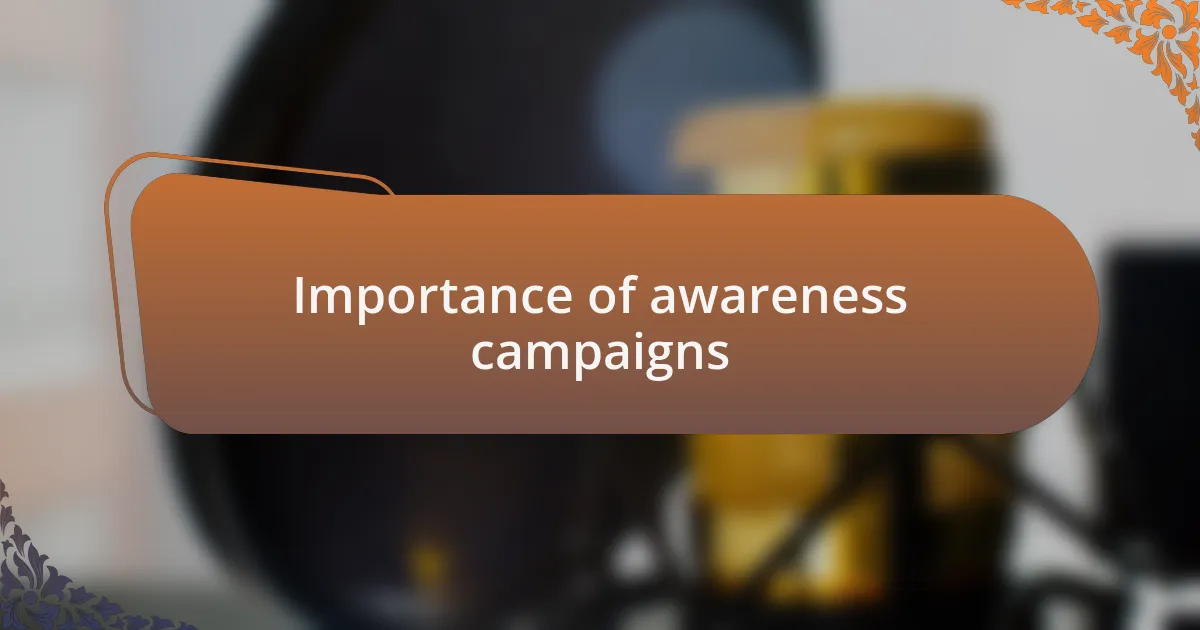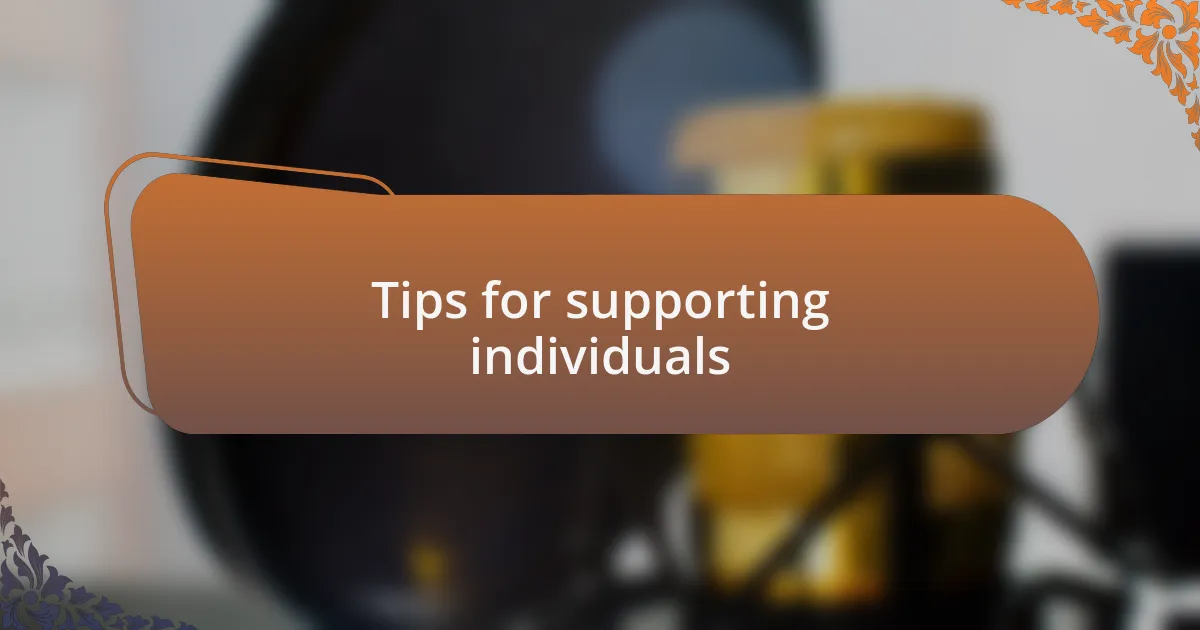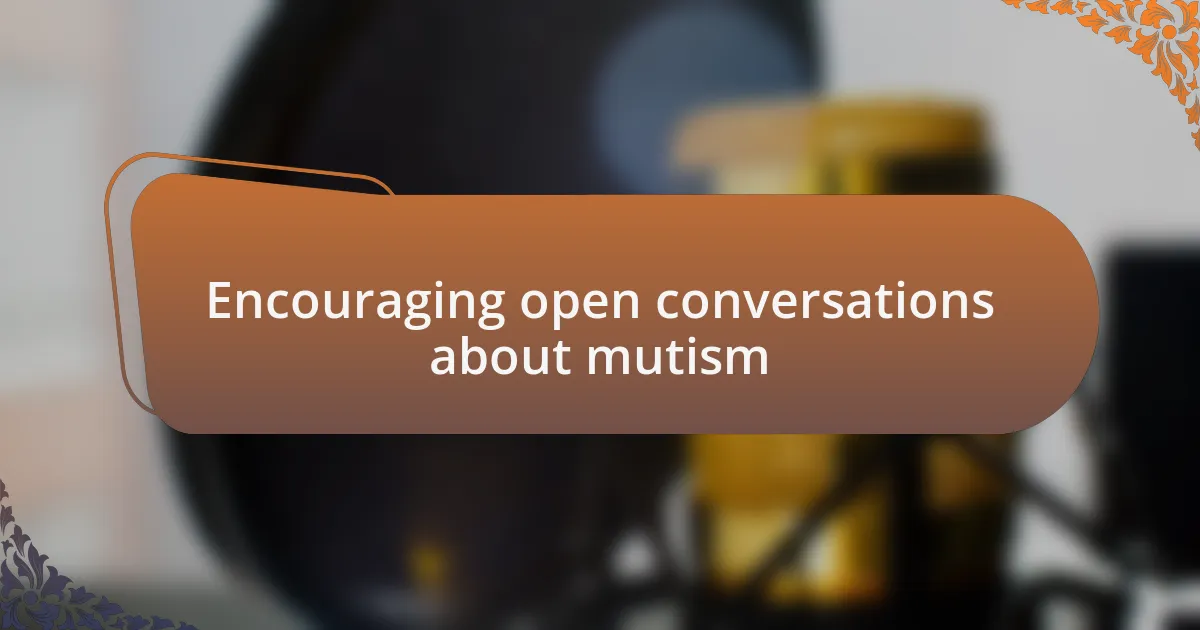Key takeaways:
- Selective mutism is a complex anxiety disorder affecting a child’s ability to communicate in social settings, often leading to feelings of isolation and invisibility.
- Awareness campaigns are crucial for educating the public, providing support to families, and advocating for better resources in educational environments.
- Effective communication strategies with children include creating non-threatening environments, utilizing alternative communication methods, and establishing routine interactions.
- Supporting individuals with selective mutism involves empathy, gradual exposure to speaking situations, and fostering inclusive conversations that encourage understanding among peers and siblings.

Understanding selective mutism
Selective mutism is more than just a reluctance to speak; it’s a complex anxiety disorder often rooted in fear and stress. I remember the first time I witnessed a child struggling with this condition. The silence in the room was palpable, and you could sense the tension. It made me wonder: what goes on in their minds during those moments of silence? Understanding that selective mutism often surfaces in social settings highlights the profound disconnect between the child’s desire to communicate and their overwhelming anxiety.
When I think about selective mutism, I consider the broader implications it has on a child’s social interactions and self-esteem. I’ve observed children who, despite having a wealth of ideas and emotions to share, feel trapped unable to voice them. It breaks my heart to see them isolated, standing on the sidelines while their peers engage freely. This struggle isn’t just about the inability to speak; it’s about feeling invisible and unheard in a world that often values extroversion.
What’s essential to grasp is that supportive environments can make a significant difference. I’ve seen magical transformations when caregivers and educators gently encourage children to express themselves at their own pace. You might wonder, can a small, nurturing gesture change everything? From my experience, yes—even the softest support can create a bridge over what seems like an insurmountable silence.

Importance of awareness campaigns
Raising awareness about selective mutism is essential for shifting societal perceptions. I recall a community event where a parent shared how their child’s struggle remained largely invisible until they spoke out. It struck me how many families with similar experiences stay silent out of fear or misunderstanding, emphasizing the need for voices to be heard and for education to fill the gaps.
Awareness campaigns not only inform the public but also provide a lifeline for families grappling with this condition. I often think about the power of shared stories; when someone openly discusses their child’s journey with selective mutism, it can spark connections and foster understanding. There’s something profoundly impactful about realizing you’re not alone in this journey—it can turn isolation into community.
Moreover, these campaigns serve a dual purpose by advocating for better resources and support systems. As I’ve interacted with educators, many expressed a desire to help but felt ill-equipped. Awareness initiatives can bridge that knowledge gap, enabling teachers and peers to cultivate environments where children can feel safe to open up. Can you imagine the transformation in classrooms where every child feels accepted, regardless of their communication abilities?

Key characteristics of selective mutism
Selective mutism primarily manifests as a consistent inability to speak in specific social situations, despite speaking comfortably in others, such as at home. I remember a particular case where a child would engage freely with immediate family members but fell silent upon encountering peers at school. This duality highlights a key aspect—it’s not about the child’s ability to speak; it’s about the context in which they feel safe.
Another significant characteristic is the combination of anxiety with the condition. I once met a parent who described their child’s fear as palpable, almost as if it wrapped around them like a heavy blanket when in social settings. That fear can be debilitating, creating a cycle where the pressure to communicate, combined with anxiety, leads to further withdrawal—an aspect that can easily be overlooked by those unfamiliar with selective mutism.
Furthermore, children with selective mutism often show nonverbal forms of communication, such as nodding or using gestures. This silent communication can be quite powerful, revealing their thoughts and emotions without the spoken word. I often wonder how many parents understand this silent language and how vital it is for building connections with their children. Recognizing these characteristics is crucial for fostering empathy and appropriate support in overcoming the challenges posed by selective mutism.

Strategies for effective communication
Effective communication with children who have selective mutism requires a gentle and patient approach. I remember a situation where creating a non-threatening environment significantly eased a child’s anxiety. Instead of directly addressing their reluctance to speak, using playful activities allowed them to express themselves without pressure. Could it be that fun is the best channel for connection?
In my experience, it’s crucial to lean into the power of alternative communication methods. One child I worked with began to thrive when we introduced drawing and writing as tools for expression. Watching them convey thoughts through pictures brought a smile to my face. Isn’t it fascinating how silence can hold a world of expression, waiting for the right medium to surface?
Additionally, consistency is key. I’ve found that establishing routine interactions—whether through storytelling or simple games—helped reduce the unpredictability that often fuels anxiety. One parent shared how their child slowly opened up during nightly story sessions, feeling secure in a familiar routine. Imagine how meaningful it is to build trust through shared moments, creating a bridge over the chasm of silence.

Tips for supporting individuals
Supporting individuals with selective mutism requires a blend of empathy and creativity. I recall helping a child by incorporating their interests into our interactions. When we combined their love for animals with storytelling, it sparked excitement that gently nudged them out of their shell. Isn’t it amazing how a shared passion can dissolve barriers?
Understanding and validating their feelings is also essential. I once listened to a young girl as she expressed her fears about speaking in class. Just knowing that someone understood her anxiety made a world of difference. Isn’t it powerful to think that acknowledging their experiences can foster an environment of acceptance and growth?
Encouraging gradual exposure to speaking situations is another crucial tip. I had a teenager who thrived when we practiced speaking in low-pressure settings, like role-playing at a coffee shop. The more we rehearsed, the more confident they became. Could it be that taking small steps together not only builds confidence but also strengthens our relationship?

Encouraging open conversations about mutism
Creating a safe environment for open conversations about mutism is essential. I remember a parent sharing how setting aside a specific time each week to chat about anything—and everything—was transformative for their child. It dawned on me how liberating it can feel for someone with selective mutism when there are no expectations to speak, just a welcoming space to engage in their own way.
I often emphasize the importance of including siblings and peers in these conversations. One day, I facilitated a discussion where children were encouraged to ask questions about each other’s experiences. Watching the eyes of a quiet child light up as they shared their thoughts was a moment of pure joy. Isn’t it fascinating how children can learn empathy and understanding from one another, breaking down the walls that mutism can build?
Encouraging open dialogues also means being proactive in communities. I recall organizing a workshop for teachers, where we discussed creating inclusive classrooms. Many educators were surprised to learn how simple changes in language or approach could significantly ease a student’s anxiety. Could fostering awareness in educational settings be one of the most impactful ways to support those who struggle with mutism?